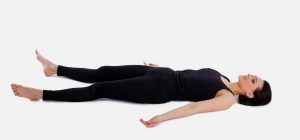 Many control systems and other internal and external factors are involved in the regulation of our breathing. The breathing pattern, i.e., its depth and frequency, changes according to how much oxygen is required by the muscles or the brain in different circumstances. Receptors in the blood and in the pulmonary alveoli sense when the supply must be increased. At rest, we breathe about 12 – 16 times per minute.
Many control systems and other internal and external factors are involved in the regulation of our breathing. The breathing pattern, i.e., its depth and frequency, changes according to how much oxygen is required by the muscles or the brain in different circumstances. Receptors in the blood and in the pulmonary alveoli sense when the supply must be increased. At rest, we breathe about 12 – 16 times per minute.
During relaxation or meditation, the breathing rate can fall to four breaths per minute, when the brain and muscles are in rest and recovery mode.
Nasal Breathing
It is natural to breathe through the nose, and our breathing naturally switches between the two nostrils. Chronobiological research shows that this happens every two hours, with 80% of the air breathed in passing through the favored nostril.
Advantages of Nasal Breathing
The natural narrowing means that the air inhaled through the nose is
- cleaner,
- more moistened and
- warmer than when breathed in through the mouth.
The mucus membranes work as a filter, which is why you should always breathe in and out through your nose. The nostrils are also the location of our olfactory organs, which sense pleasant or unpleasant odors that then influence our state of mind.
If the activity level of the diaphragm is increased, e.g., by the increased resistance of nasal breathing, this causes other benefits, such as the promotion of venous return from the legs.
Abdominal Breathing
The downward movement of the diaphragm when inhaling compresses and stimulates the organs below. This gentle pumping action stimulates and activates the metabolism of the organs involved in the digestive process. When you breathe out, your diaphragm rises and massages your heart and also activates the vagus nerve. During the inspiration phase of deep yogic breathing, the air then flows into the abdomen. Then the movement continues over the chest and the collar- bone. Breathing can become shallow, especially during exertion, i.e., in difficult or unfamiliar asanas (positions), so this is precisely when you should really try to breathe deeply but calmly.

“Relaxation Pose”
Observe your body: does your chest or your abdomen rise first when you inhale? The former is a sign of breast breathing, the latter of abdominal breathing.
Breathing and State of Mind
The way we breathe reflects our state of mind, which is why our experience of the same breathing exercises can vary from day to day.
Your state of mind is reflected in your breathing, and you can control it by controlling your breathing.
The Breathing Phases
There are three phases in the breathing process: inhalation, exhalation, and the retention of breath, the length of which depends on how relaxed you are.
If you feel unwell during the breathing exercises, or are suffering from dizziness, nausea or a headache, you should stop. If these feelings persist, stop exercising altogether. You should only perform the exercises while you are feeling well.
Lung Activation
Raise your arms to the side at head height with the palms facing upward, breathing in deeply as you do so. Fold your hands and hold your breath. Straighten your arms upward and in this state of tension lean your upper body first to the right and then to the left. Then center your body again and only then breathe out, lowering your extended arms down to the side of your body.
- With your in-breath, raise your arms and imagine that you are taking in energy.
- With your out-breath, exhale stale air and expended energy.
- Breathe in and out through your nose.
Gorilla
Breathe in deeply and hold your breath. Tap your lungs with your fingertips, moving outwards from your chest to your collarbone. Tap yourself from your chest down- ward and also tap your ribs and back. When it becomes uncomfortable to hold your breath, breathe out in bursts until your lungs are completely empty, leaning slightly forward as you do so.
Hold your breath for a moment and then breathe in deeply through your nose.
The second time around, hit your chest with a flat hand and the third time with your fist.
- Before holding your breath, inhale just enough so that it doesn’t hurt when you beat your chest.
- The beating action stimulates your blood circulation, your metabolism and your lungs.
- As you hold your breath, relax your face, your neck and your larynx.
Fire Reverence – Agni Sara
Inhale deeply, then breathe out and in again. Then noisily exhale as much air as possible through pursed lips, bending forward as you do so. Keep your back straight and place your hands on your thighs. Pull your stomach upward and inward. Hold your breath after exhaling. Perform a pumping movement in which you expand and contract in your stomach as quickly as possible. When you feel the need to breathe, you should do so. Breathe quickly but under control through your nose as you straighten yourself up again. Breathe out and in twice more before repeating the whole exercise 1-2 times.
This exercise gives you energy and stimulates digestion. You can increase the effect by drinking half a glass of lukewarm water before performing this exercise on an empty stomach.
Alternate Nostril Breathing – Anuloma Viloma, Nadi Shodana
Breathe out and in twice a little more deeply than nor- mal to prepare yourself for this exercise. Alternately close your right nostril with your right thumb and your left nostril with your ring finger. Bend your index and ring finger. Always inhale through the same nostril through which you just exhaled, and then exhale through the other one. Count to four as you breathe out and to eight as you breathe in, in the same rhythm. Inhale and exhale about 10 times.
- Alternate nostril breathing helps you control your breathing and open your nasal passages. This breathing exercise helps to fight allergies, hay fever and asthma and prevent head colds.
- Emotional imbalances are transformed into a calm feeling of power and strength.
- Sun (active) and moon (calm) energies are harmonized.

Leave a Reply